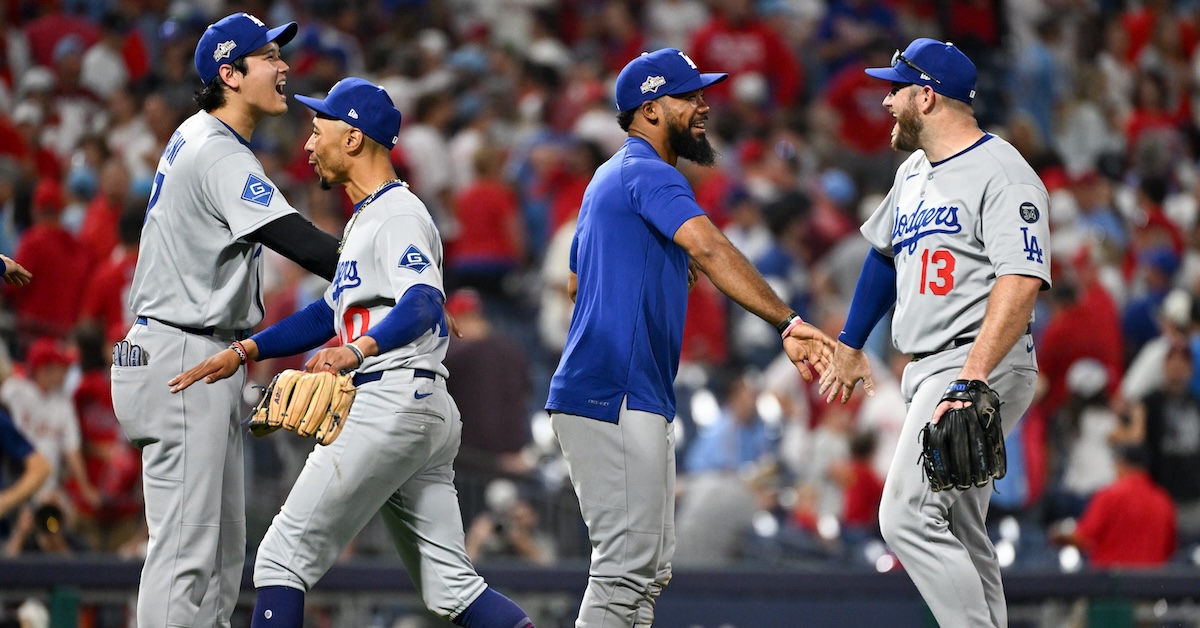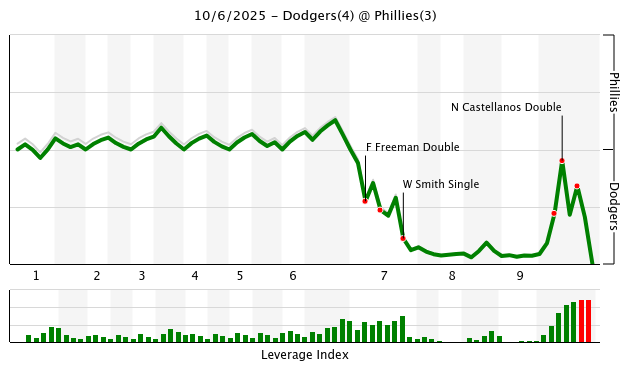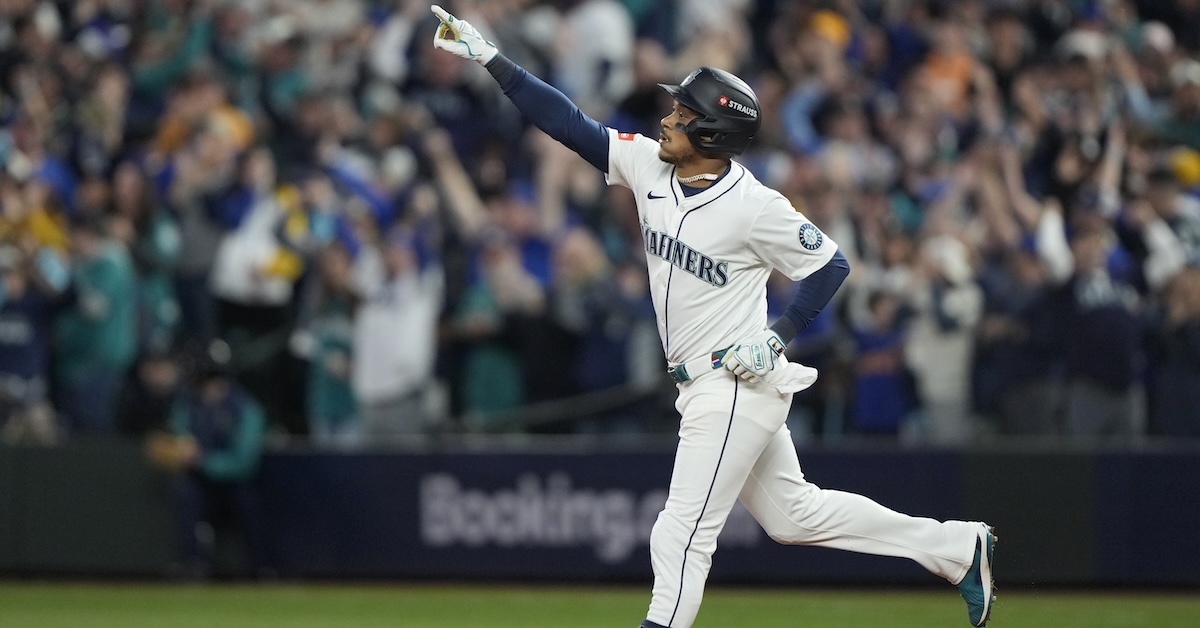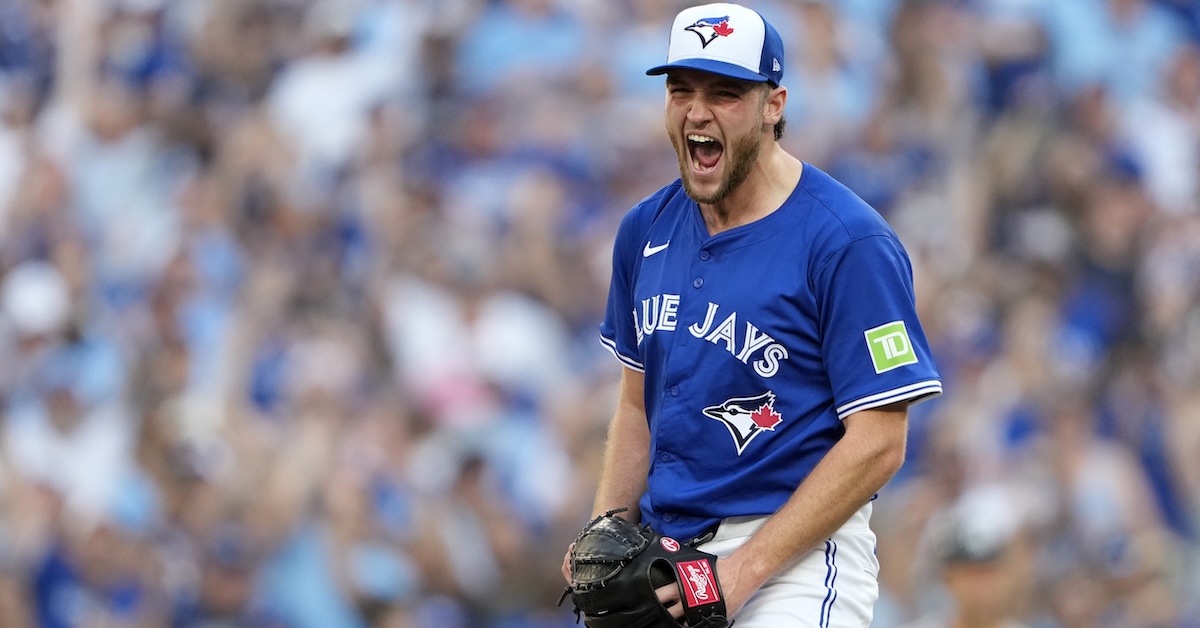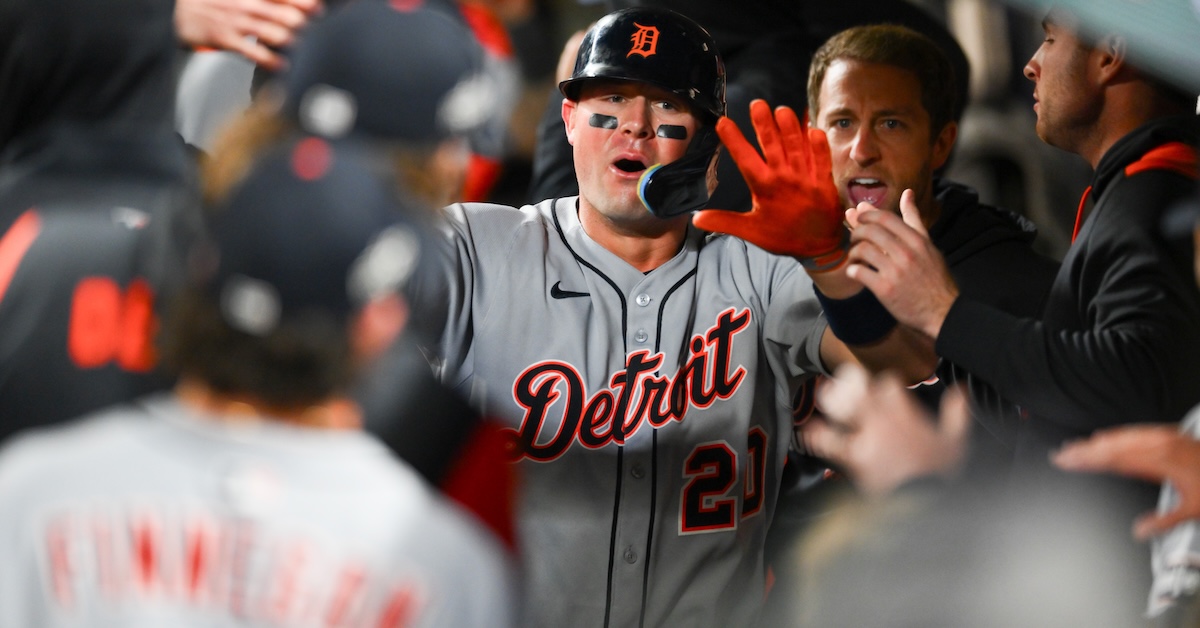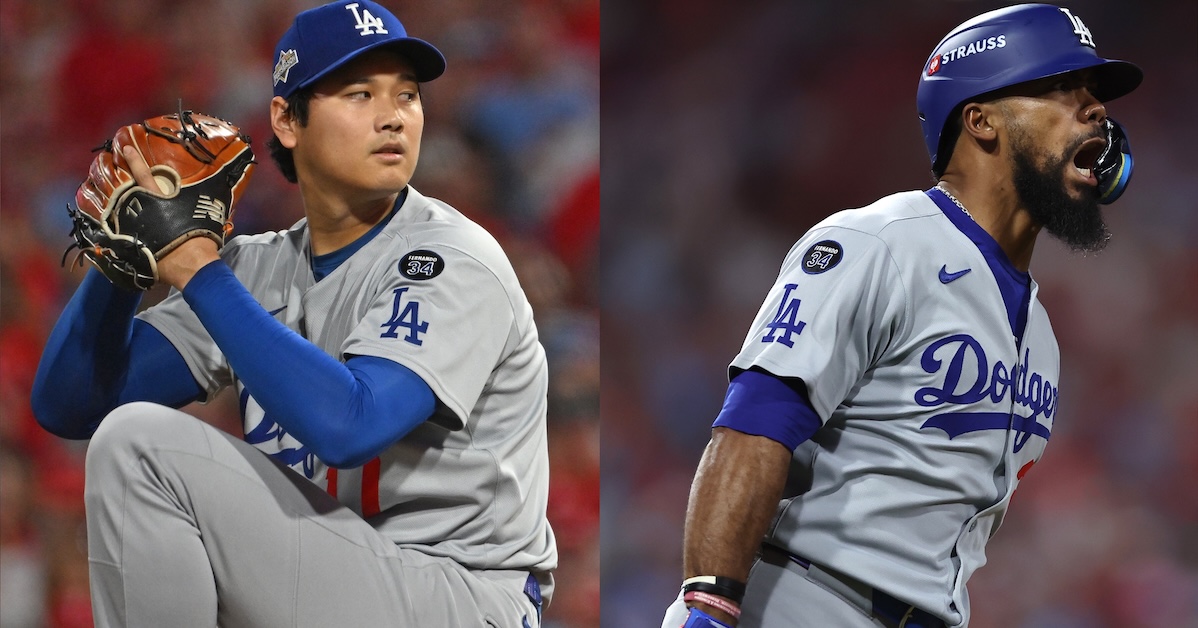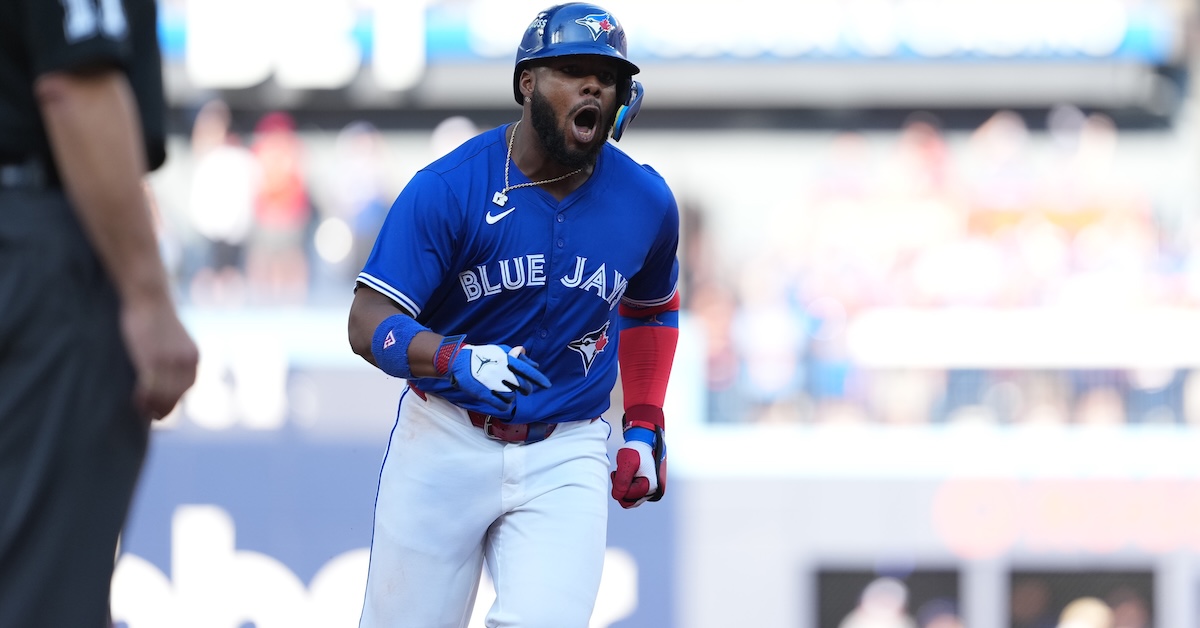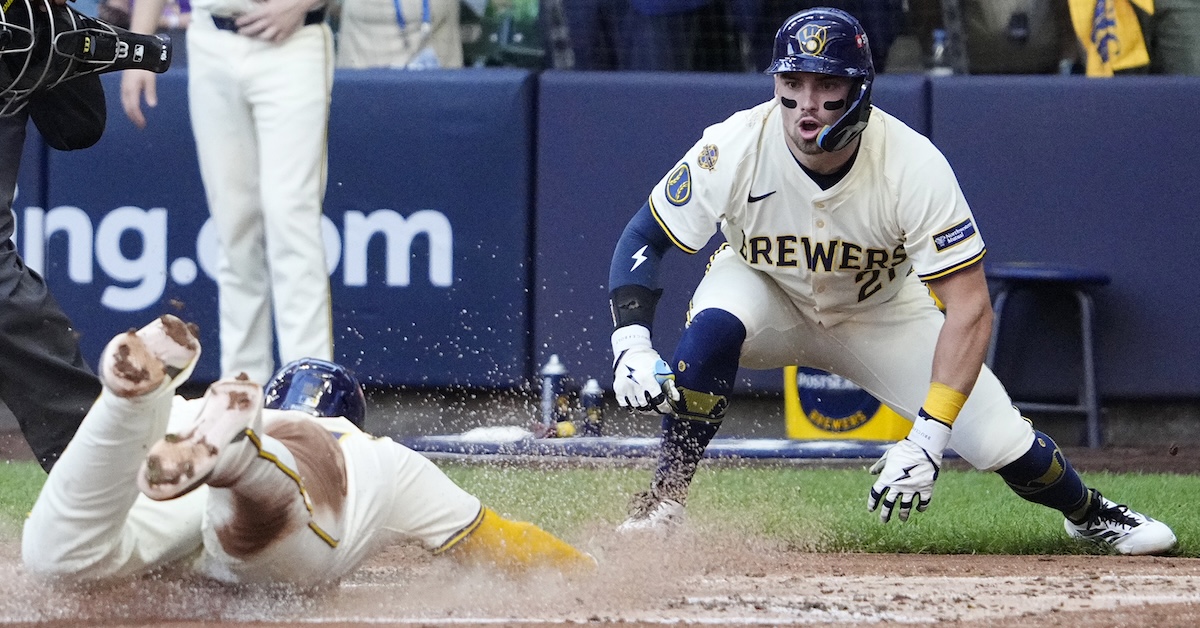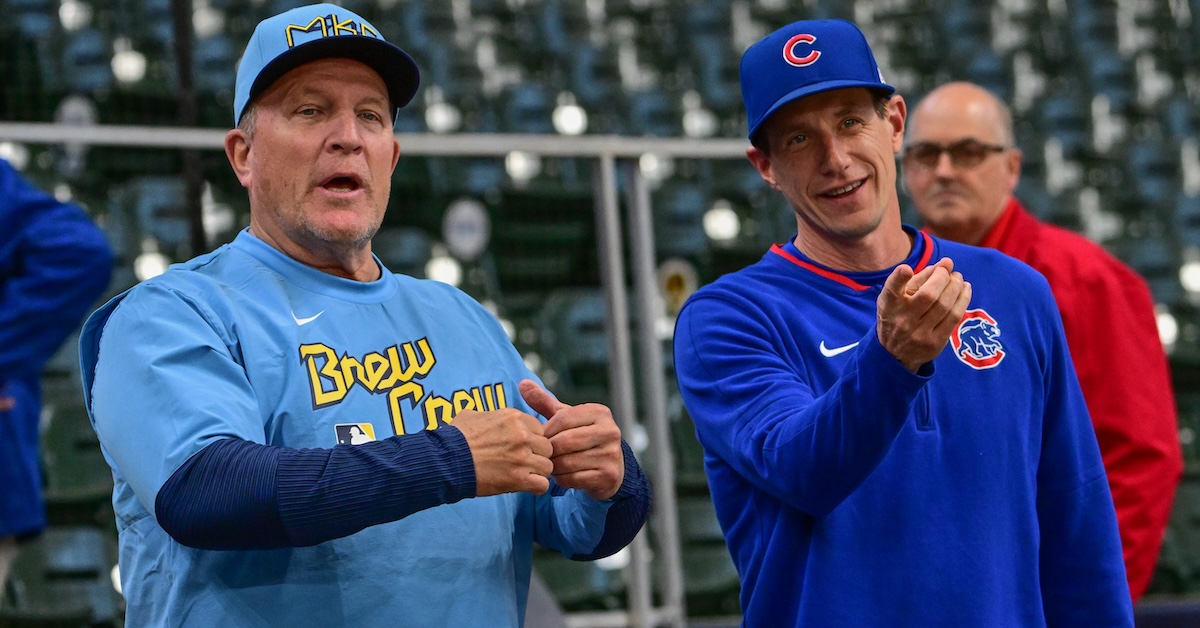Brewers Crush Cubs, Near Sweep
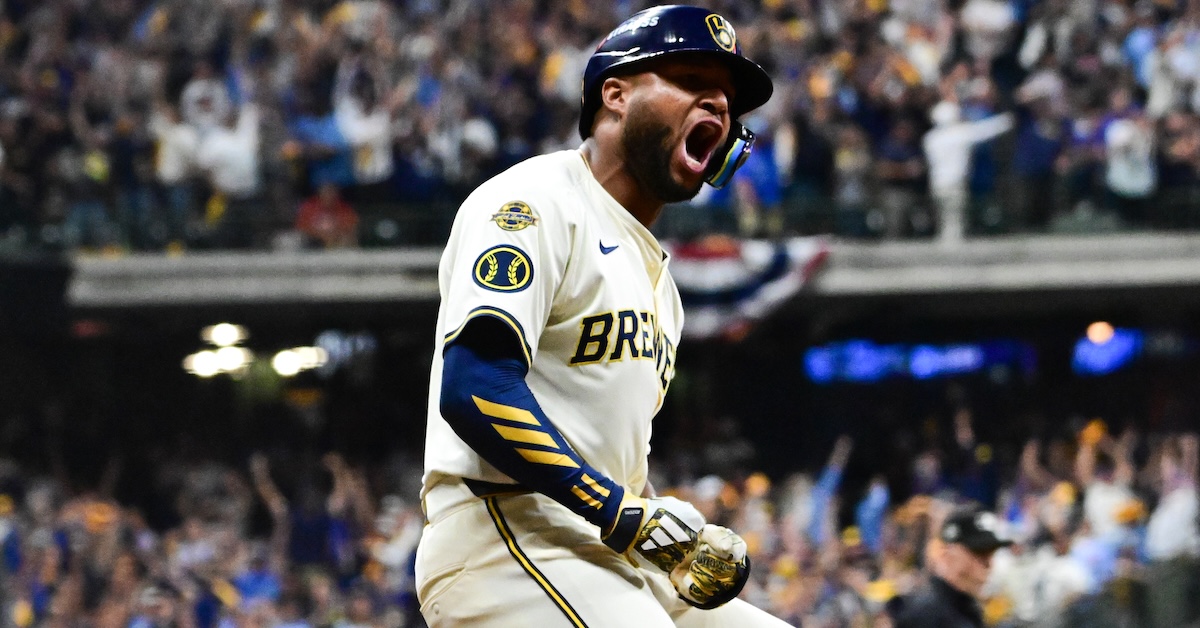
Some playoff games flow like beautiful novels. Two ace starters might have a duel – narratively satisfying. Maybe one pitcher is trying to hold off the opposing offense – who doesn’t like a siege story? Or, perhaps a superstar slugger is on an absolute tear – the great man theory of postseason baseball is alive and well. But Monday night, the Brewers and Cubs played a game that doesn’t fit any of those tropes. The Brewers bullpenned it. The Cubs answered with Shota Imanaga, who gave up 15 homers over his final nine regular season starts, on a short leash. The result? A disjointed game, which can best be captured by a disjointed recap.
Justin Turner, Leadoff Hitter
Justin Turner doesn’t hit leadoff. In his lengthy major league career, he’s racked up exactly 69 plate appearances in the leadoff spot, and only one in the past decade. He’s never hit leadoff in the playoffs. He was well below average at the plate this year – a 71 wRC+ and negative WAR. Naturally, he hit leadoff in the most important game of the Cubs season so far.
Why? Because Chicago manager Craig Counsell is no dummy. The Brewers started Aaron Ashby, who astute observers will note pitched in Saturday’s Game 1. Ashby was just in there as an opener, a southpaw option against Kyle Tucker and the rest of the Cubs lefty contingent. Counsell’s counter-move was straightforward. The other guy starts with a lefty reliever? He’ll start with a lefty-killing righty as more or less a pinch-hitter.
The move didn’t pan out right away; Turner flied out softly to open the game. But the rest of the Chicago lineup immediately went to work – single, walk, massive home run from Seiya Suzuki. It was 3-0 in a blink. Brewers manager Pat Murphy tried to stretch Ashby through a second inning even after the setback, but it just wasn’t happening. Ashby needed 43 pitches just to get through 10 hitters. That’s right, 10 – his last batter was Turner a second time, and Turner flared an easy single to left to chase Ashby. Counsell’s gambit worked to perfection; he somehow got two straight good platoon matchups for Turner in a series where high-octane righties abound.
Bombs Away
Imanaga ended the year in poor form. All those homers ballooned his September ERA to a nasty 6.51. His 6.68 FIP was somehow worse. He appeared against San Diego in the opening round of the playoffs, as a bulk innings option behind opener Andrew Kittredge, and gave up another blast en route to an uneven appearance (four innings, three strikeouts, two walks, one homer, two earned runs). But what was Counsell going to do, not start him?
The Brewers aren’t necessarily a home run-hitting team, but they’re open to the idea if invited. Imanaga’s arsenal is nothing if not inviting; after a pair of two-out singles, Andrew Vaughn turned on a belt-high sweeper and tucked it into the left field stands. It was 3-3 before we left the first inning, but it wouldn’t stay that way long. When the top of the order came up again in the third inning, Willson Contreras demolished a 91-mph fastball to put Milwaukee on top 4-3. Christian Yelich followed with a hard-hit single, and Counsell had seen enough. He went to the pen after 46 pitches and eight outs.
The Miz!
Jacob Misiorowski must eat sugary cereal for breakfast. I say that because I know how I act after I’ve had a bowl of Frosted Flakes, and he was exhibiting similar symptoms when Murphy turned to him to start the third inning. Think his fastball is fearsome at its usual 101 miles an hour? It’s downright terrifying when he ramps it up to 104, as he repeatedly did in his first inning of work.
Misiorowski is pretty much unhittable when he’s on. In the third, he tallied two weak groundouts, an overpowering strikeout – and a four-pitch walk. The second of the groundouts ended the inning, but also showed Misiorowski’s mindset. After fielding it cleanly, he ran to first base himself on a full sprint, perhaps a little too amped up to trust himself with an underhand toss. Then he flexed and roared, exulting in the playoff atmosphere.
The next inning brought more of the same – an amped-up Miz, two strikeouts, and a five-pitch walk where he got increasingly wild with each pitch. Oh yeah, the last of those batters was Michael Busch, in the game for Turner now that the leadoff spot came up with a righty on the mound. Again, though, you don’t so much beat Misiorowski when he’s this keyed up as wait him out. Nico Hoerner finally tallied a hit against him in the fifth, an opposite-field line drive, but there’s just no headway to be had when you’re trying to time up 103-mph fastballs and 95-mph sliders. The other three Cubs that inning managed a strikeout and two weak foul pops.
When Misiorowski finally departed at the start of the sixth, the Brewers led comfortably. The Cubs never looked particularly close to stringing anything together against him. I’m not sure how long he’ll be able to go in his next October appearance, or how many days of rest the Brewers will want to give him after 57 adrenaline-pumping pitches. I am confident that it’s going to be electric to watch, and that the Cubs are desperately hoping that they can somehow pull off a reverse sweep in this series without having to face any more 104-mph heaters. What a performance.
Action Jackson
Jackson Chourio missed almost the entirety of August with a hamstring strain. He looked less explosive upon his return, with less power and a less-adventurous approach to baserunning. Then he aggravated the injury in the first game of this series, putting his availability for Monday night in at least a bit of doubt. His first two at-bats produced two outs against the otherwise reeling Imanaga. His third time up? A towering, 419-foot homer to dead center that put the Brewers up 7-3 in the fourth inning.
Is Chourio back? It depends on how you’d define back. He’s still limping around at times, and it’s clear that the hamstring is bothering him. He bumped into Busch while rounding first base on a sixth-inning play and looked meaningfully slower as he continued to second (speed wasn’t an issue; Dansby Swanson had just sailed a throw into foul territory and there was little chance of a play at the base). But on the other hand, he’s blasting huge home runs and making nifty plays in foul territory, where he turned a foul ball into an out with a smooth, wall-scraping grab. I don’t think he’s at full strength, but he’s still a dangerous hitter, and even if his baserunning prowess is down, the Brewers will happily keep running him out there.
We’ve Got Ice
Caleb Durbin’s batting line in this game doesn’t look particularly impressive. He recorded no hits or walks. He hit into a double play. But in that fateful fourth inning, he saw a Daniel Palencia fastball headed in his general direction and heroically tossed his elbow at it. He caught the ball as flush as you can imagine, a direct hit on his arm, one of those “act like you’re getting out of the way but make sure to do the opposite” moves that grind-and-grit hitters have been using to accrue free bases since time immemorial.
It’s no accident that Durbin led the NL with 24 hit-by-pitches this year, only three off the major league lead. It’s more impressive than that, even; Durbin did it in 506 plate appearances, while leader Randy Arozarena needed 709 to get to 27 HBPs. You might not like this skill, but it’s real, and Durbin is the best in the majors at it right now.
Those free bases don’t always matter. This time, they did. Durbin’s spot in the lineup produced a baserunner instead of an out, which means that when Blake Perkins struck out immediately afterwards, there were two outs instead of three. That meant more pitches for Palencia, and also that Joey Ortiz’s line drive single turned the lineup over. You’ve already read what happened next – Chourio hit the ball to Wauwatosa (a wonderful suburb of Milwaukee, I promise) and gave the Brewers an insurmountable lead.
Lockdown
The Cubs offense might have gone quiet against Misiorowski, but there was still time left. They had 12 outs to play with after Milwaukee’s scariest arm departed, but they couldn’t do anything with them, because the guys behind the Miz are pretty good too. Chad Patrick struck out two Cubs in a perfect sixth. Jared Koenig followed with four straight outs, with huge assistance from Vaughn, who made a nifty play in foul territory behind first base to turn a would-be infield single into an out. All of the sudden, there were only five outs to play with, and Milwaukee hadn’t even gone to its late-inning options.
Even a one-run deficit feels almost insurmountable against the Brewers by the time the eighth inning rolls around. Trevor Megill and Abner Uribe were both spectacular this year, with matchingly gaudy ERAs and strikeout rates. Megill’s health was a question heading into Game 2; his first appearance back from a flexor strain was the regular season finale, and he didn’t appear in the first game of this series. His stuff looked slightly diminished – slower fastball, less-biting curve – but stuff has never really been Megill’s problem. The little stuff heatmaps on our player pages? They don’t get darker red than Megill’s. He looked plenty nasty even sitting down a tick, and he pounded the strike zone with plus command. Good luck, hitters.
No one knew how good Megill would be Monday. There was no such doubt about Uribe’s form. He started 2025 strong and got stronger as the year wore on, blowing lineups away with his trademark sinker/slider duo while halving his walk rate. The Cubs were just the latest victims as he struck out the side on 13 pitches, retiring each batter with a scintillating slider below the strike zone. The Brewers didn’t need a lockdown performance from their bullpen, but with a travel day Tuesday, there was no reason to leave anything to chance; Murphy put the hammer down consistently as soon as he had a lead.
Conclusions
Don’t let the early innings fool you; the Brewers absolutely torched the Cubs today. They were constantly on base, threatening to score in nearly every inning, and only let off the gas at the very end. How in the world are you going to score seven runs against their bullpen? This one wasn’t as close as the not-very-close scoreline. Even before Chourio put things away, the Cubs didn’t seem particularly likely to put anything together against Milwaukee’s endless parade of strong relievers.
I don’t know if a bullpen game is helpful to Milwaukee’s long-term chances, but it’s pretty hard to argue with its effectiveness on a single night. Toss an in-form Misiorowski into the mix, and there just isn’t much time to score runs before the door closes. Even with the nifty Turner-leadoff gambit, the Cubs ended up with a lot of tough matchups against a lot of excellent pitchers. I can imagine a seven-game series blunting the effectiveness of the strategy, and the Brewers will probably tinker with their roster ahead of a potential championship series, but this is a really strong run prevention plan. They might be able to make the entire series out of pitching from Freddy Peralta, a to-be-announced starter (Jose Quintana or Quinn Priester), and a dominant bullpen.
On Chicago’s side, there’s not a ton of strategy to discuss; the Cubs just need to score some runs, and also to give up fewer of them. There weren’t a ton of interesting situations where a different decision might have sent us down a different path, no spots where a pivotal play could have gone Chicago’s way. The Cubs seized on their big chance with a three-run first. It just wasn’t enough. That doesn’t mean that the rest of the series will go the same way – as they always say, momentum is tomorrow’s starting pitcher – but so far, the Brewers have been thoroughly outclassing the Cubs.

